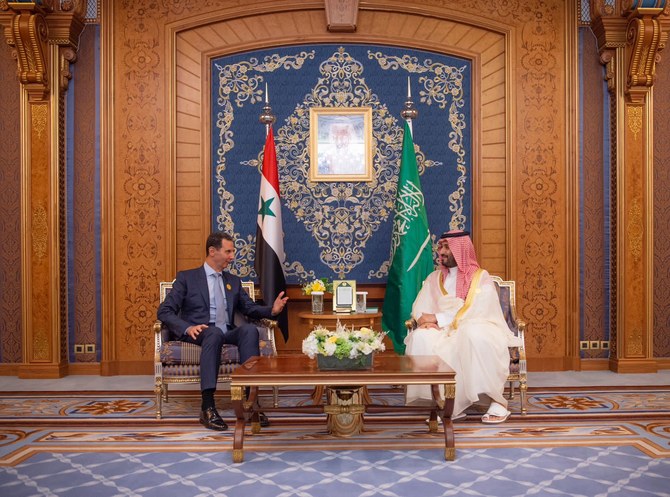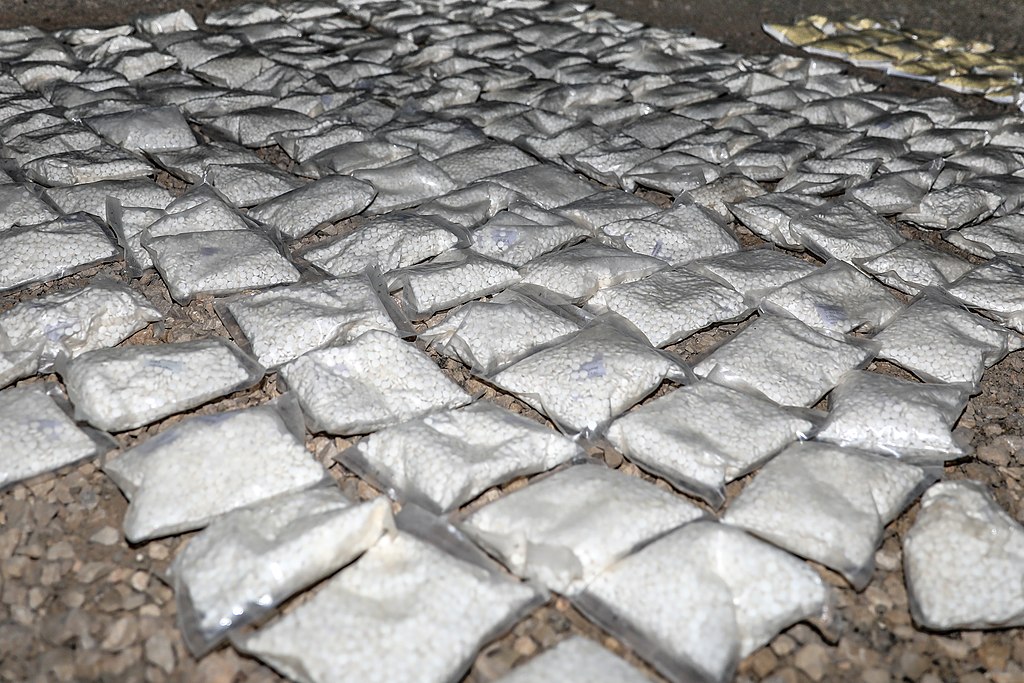Publications
INSS Insight No. 1766, September 20, 2023
While Syria’s regional standing has been granted a new lease on life, internally, Syria is a failed and disintegrating state, where both the economy and the security situation are deteriorating. The internal chaos, Iran’s insistence on maintaining a foothold, and the growing self-confidence of President Bashar al-Assad, who may become less inclined to ignore repeated Israeli airstrikes, obligate Israel to adapt the military campaign it has conducted in Syria over the past decade to the new reality, validate its goals, and define what it sees as necessary achievements, rather than acting out of inertia.
On May 19, 2023, President Bashar al-Assad addressed an Arab League summit in Saudi Arabia, more than a decade after Syria was suspended from the organization over the brutal repression of popular protests, which escalated into a protracted and bloody civil war. Assad’s address at the summit is the result of the regional normalization that began some two years ago. The process of Syria’s return to the inner Arab world picked up speed in late 2021, when Assad’s regime renewed ties with Jordan, and accelerated still further in the aftermath of the earthquake that struck Syria in February 2023, when countries in the region offered Syria extensive humanitarian aid. The process peaked around a month later, when Syria and Saudi Arabia renewed diplomatic relations. This normalization process is guided by an Arab initiative, spearheaded by Jordan, which aims to chart a course toward the end of the conflict in Syria. The crux of the plan is recognition of the Assad regime and massive financial investment by the Gulf states in reconstruction of the devastated country. In exchange, Assad would agree to the return of Syrian refugees, halt his involvement in the drug trade that has seen the Middle East inundated with Captagon (fenethylline), and speed up the removal of foreign forces from Syrian soil.

Thus far, however, and not surprisingly, the regime has not made a full commitment to abide by any of the stipulated conditions, and at this stage, Assad is enjoying the gift of legitimacy without having given anything in return. Moreover, in a recent interview to Sky News in Arabic, Assad sharply criticized other Arab countries, claiming that Syria’s return to the Arab fold was for the time being mainly a formality and that his regime enjoyed few meaningful contacts. This, he argued, is because the Arab League is not a real institution. In contrast, when asked about his country’s relations with Russia and Iran, he pointed out that they prove that Syria knows how to choose its friends wisely.
While Syria’s regional standing is enjoying a new lease on life among other Arab nations, as if it were a sovereign and fully functioning country, an examination of its domestic situation reveals a desperate picture of an authoritarian regime characterized by poor performance and only limited ability to provide governance, security, and order. More than a decade of civil war and violent military repression have left Syria a failed and disintegrating state, in which the leadership is unwilling to engage in reconstruction or improve the lot of its people. In fact, since Assad’s festive speech in Jeddah in May, Syria’s situation – economic and military – has deteriorated still further, evident on several levels:
Starvation: In August, the Syrian pound fell to its lowest level ever and is currently traded at around 15,000 pounds to the US dollar, compared to 47 pounds before the outbreak of the civil war. The 70 percent rate of inflation for basic products and the nonfunctioning infrastructure have sparked mass protests in recent weeks. The demonstrations began shortly after the President decided to double the salaries and pensions of civil servants, while most of the population continues to suffer from poverty and food insecurity. The protests began among the Druze residents of southern Syria, in an area under the control of the Damascus regime, and spread to additional areas, controlled by opposition forces. The protesters are demanding immediate action to improve their economic situation, such as renewing the state subsidies on bread and gasoline as well as providing regular electricity. These economic demands, however, quickly expanded into political demands, led by the overthrow of the current regime, the release of prisoners, and the end of the Iranian and Russian presence in the country. Thus far, the protests do not pose any threat to the regime, but there is a potential for them to spread and escalate, given the dire situation of the Syrian population.
Assad’s drugs: Syria’s economic crisis and the international sanctions imposed on the country have exacerbated the phenomenon of drug manufacture and trafficking – especially Captagon (fenethylline), a synthetic amphetamine-type stimulant. This activity occurs with the blessing of the regime, and with units in the Syrian army reaping the huge sums of money that the industry generates. In recent years, the Middle East has been inundated with Captagon pills; especially hard hit are Jordan, Saudi Arabia, and other Gulf states. Experts estimate that since April, fenethylline with a street value of more than $1 billion has been seized in the Middle East. Indeed, the hope that Assad would cease distributing the drug – a phenomenon that he is responsible for – was one of the reasons Arab states renewed relations with the regime. Jordan, which is extremely concerned about the proliferation of Captagon on its soil, has adopted a two-pronged policy with regard to the Syrian regime: on the one hand, it has increased intelligence and operational cooperation with Damascus, in an attempt to fight the phenomenon together. At the same time, and on the sober understanding that the Assad regime does not have a genuine intention of ending the manufacture and trade of drugs, it has taken some unusual and aggressive measures, including airstrikes against the drug laboratories – most recently in early September; the assassination of a drug dealer in southern Syria in May; and shooting down of drones carrying drugs and weapons as soon as they enter Jordanian airspace. Syrian drugs are not limited to the Middle East, however, and there have been recent reports that Germany uncovered a Syrian drug laboratory on its soil, along with $20 million of Captagon. It is believed that the drug will continue to penetrate the European market because of Syria’s need for increased revenues.

Waves of terror and violence: Assassinations and violent confrontations between various groups within Syria have become a routine phenomenon in the country and, in recent months, seem to have reached new heights. Chaos is rampant in the south of the country, which is the staging ground for clashes between forces loyal to the regime and its opponents. In the north, the regime, aided by Russian forces, has intensified its attacks against opposition organizations and resumed its campaign of indiscriminate bombing, including the lethal attack on a fruit and vegetable market in the Idlib province on July 25, which left at least 13 people dead and dozens wounded. In the same region – and for the first time in years – an Islamic group by the name of Ansar al-Tawhid, which is affiliated to al-Qaeda, detonated explosives placed in tunnels dug underneath army positions, killing at least 11 soldiers.
In the east of the country and near Damascus, the ISIS terrorist organization has recently carried out a series of lethal attacks, the likes of which were not seen since 2018, inflicting many causalities on the Syrian armed forces. The most prominent of these attacks came in early August, when more than 30 soldiers were killed in an ambush on a military bus in the Deir ez-Zor region. In early September, there was an uptick in clashes between tribal militias and Kurdish fighters over control of Deir ez-Zor. If this phenomenon develops further, it could undermine the alliance between the Kurds (led by the Syrian Democratic Forces) and the Arab clans, which under US auspices have joined forces to fight against ISIS. In other words, Assad’s control of the country is precarious, and even in regions that are ostensibly under his regime’s control, there is a significant discrepancy between his regional standing and his domestic weakness.
The increase in tensions and military clashes is not limited to local forces in Syria but has also spread to relations between Russia and the United States, both of which are active in the region. The US has complained in recent months that Russian planes regularly disrupt their operations, violating the airspace reserved for the alliance of nations engaged in the struggle against ISIS. In late July, a Russian fighter jet damaged an American drone in Syrian airspace a counterterrorism mission. According to Washington, this is part of a joint Russian and Iranian ploy to exhaust alliance troops and force them to withdraw from Syria.
Iranian Weapons and Israeli Attacks
This chaotic situation allows Iran and its proxies to operate with almost total freedom in Syria, entrenching their hold over the army, whose reconstruction and performance depend on aid from Tehran. In addition, the fact that Russia is preoccupied with the war in Ukraine makes it easier for Iran to expand its operations and deepen economic and military cooperation with the Syrian regime. In a June 2023 report, the Washington-based Institute for the Study of War said that the Islamic Revolutionary Guard Corps Quds Force and Hezbollah have established a headquarters and additional military bases in eastern Syria, including arms depots, training camps, and barracks. This is part of Iran’s efforts to safeguard the transportation lines throughout the country, including those to the Golan Heights and Lebanon. In response to the continued Iranian entrenchment and the smuggling of weapons from the Islamic Republic, Israel continues with its campaign between wars and has intensified its airstrikes in the country – with the focus on targets belonging to the regime, most of which have been identified with Iranian activity. In August, the Syrian Observatory for Human Rights published a report claiming that Israel has launched 26 airstrikes in Syria since the start of 2023. An August 28 attack on the international airport in Aleppo destroyed an Iranian arms shipment that contained sensitive equipment (possibly linked to the Syrian air defense system). As happened in the previous attack, the damage led to the airport’s closure for several days. On September 13, there were two attacks in western Syria: the attack on the Shuairat military airport followed an attack hours earlier in Tartous – apparently targeting Syria air defense positions.
Against the backdrop of the regional normalization of relations with Assad, at a time when Syrian domestic chaos is rife and Iran insists on maintaining its presence in the country, Arab states would do well to be more assertive in their demands of the regime and condition normalization and economic aid to Syria on the regime taking concrete measures. Chief among them is a halt to the Captagon industry, counterterrorism measures against ISIS, increased governance in the south and other regions under the regime’s control, and a reduced Iranian presence on Syrian soil. Regarding Israel, Assad’s improved regional standing and his increasing self-confidence could erode his willingness to turn a blind eye to Israeli attacks and instead encourage him to respond. In addition, ten years of Israeli airstrikes have failed to halt efforts by Iran and its proxies to entrench themselves militarily in Syria. Therefore, in addition to rethinking and updating the IDF’s military strategy vis-à-vis Syria, Israel should extend its policies on Syria to the diplomatic arena and expand dialogue and cooperation with Arab states that share Israel’s interests vis-à-vis Syria. A combined military and diplomatic push could improve Israel’s responses to the security challenges presented by the Syrian front.



